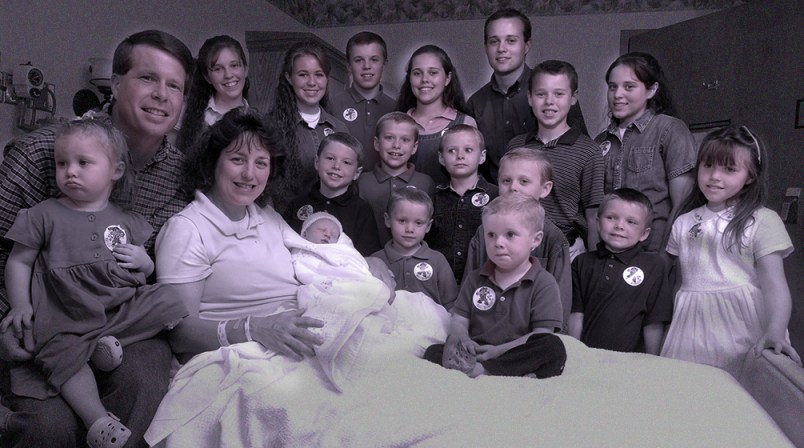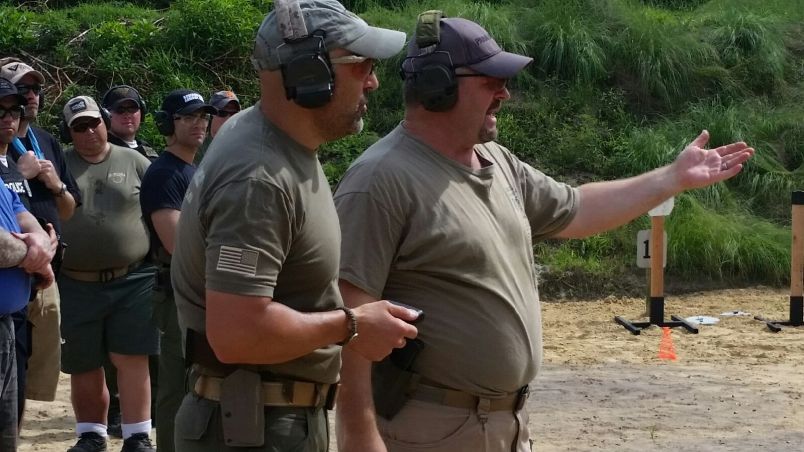The road to Wal-Mart is long and straight. Thanks to an exceptionally rainy spring, the roadside is freckled with wildflowers; on this particular post-rainstorm afternoon, the clouds hang low in the sky, looking particularly creamy and plump. For 80 miles, there is absolutely nothing to buy.
A few miles south of the five-stoplight town of Fort Stockton, Texas (pop. 8,384), home of the world’s biggest roadrunner statue, the ranches and oil fields are interrupted by billboards and highway signs, promises of upcoming commerce. They’re followed by the car repair shops that mark the outskirts of town. Then, looming higher than everything else in sight: a blue and white sign with a friendly yellow star.
America’s biggest retailer first opened up shop in this West Texas town 29 years ago. Since then, it’s been the location of bake sales and bomb threats, first jobs and firings—all the daily drama of a big store in a small town.
Wal-Mart means a lot of different things to a lot of different people. Depending on who you’re talking to, it’s a job destroyer or a job creator; a signifier of poor taste or a proud badge of the heartland; an example of everything that’s wrong with America or everything that’s great about capitalism.
In small towns and rural areas, however, Wal-Mart is less a symbol and more a staple. In cities and city-adjacent places, people can refuse to shop at Wal-Mart as a political or aesthetic choice. In rural areas, that’s much harder to do. In some towns, Wal-Mart may be the only grocery store, or the only pharmacy, or the only place to buy books and DVDs. Wal-Mart’s supercenter stores are open 24 hours; in many small towns, they’re the only store with lights on after dinner time.
All of this, of course, is part of the Wal-Mart plan: They move in, push other stores out of business while simultaneously expanding their services—at some supercenters you can get new tires, new glasses, and a teeth cleaning—until suddenly you find yourself buying everything at Wal-Mart because there’s nowhere else to buy it.
So as Wal-Mart encroaches on more parts of life, more of people’s lives happen at Wal-Mart. The chain is the third biggest vision care provider in the country, the fourth biggest pharmacy, and the biggest grocery store. People sell drugs in Wal-Mart and make drugs in Wal-Mart. In one Florida town, nearly half of all crime takes place at Wal-Mart. Some people live in Wal-Mart parking lots; others try to live in the stores themselves. Teens don’t hang out at malls anymore; they hang out at Wal-Mart.
It’s the omnivorous quality of Wal-Marts—how they seem to consume surrounding communities, pricing out the competition and building ever-growing parking lots—as well as their infamously poor treatment of employees, that has won them many opponents. A few years ago, when I lived in Baltimore, I lackadaisically participated in the movement to prevent a proposed Wal-Mart from being built in my neighborhood. I could never imagine myself shopping there; to me, the store just symbolized more traffic and exploited workers. (Thanks in part to community pressure, the Wal-Mart plans have since been scrapped.)
My relationship with America’s biggest retailer changed when I moved to rural Texas three years ago. I quickly discovered that groceries were expensive in Marfa, the small town where I lived, and some things (a garlic press, patio furniture, bulk-sized bags of kitty litter) just weren’t available. The nearest Wal-Mart was 100 miles away. I had big plans for my first visit in 2012, but the size of the place, the sheer number of options left me feeling staggered and a little woozy. I had neglected to bring a shopping list; without some sort of organizing principle, I had the feeling I could wander the aisles forever, becoming a kind of wraith of Wal-Mart, a spooky lady who piles her cart higher and higher but never checks out. The only thing I remember buying that day was a carton of strawberries. It was winter and the stores in Marfa hadn’t stocked them for months. The Wal-Mart strawberries were deep-red and juicy and cheap. I ate them in the car on the way home, feeling decadent and guilty and satisfied.

Fort Stockton is a town surrounded by ranch land, on the fringes of Texas’s oil country. Wal-Mart first opened a store there in 1986; since then, the store has shaped the town in ways both overt and subtle. In 2006, the store began staying open 24 hours a day. “We used to come to the store at 2 a.m., just for the novelty of it,” Colette Barragan, a middle-aged music and art teacher, told me. In 2011, it was converted into a supercenter—which essentially meant it increased by 42,000 square feet and now also sold groceries. At 95,000 square feet, the store is about half the size of the average supercenter. (At that time, there were two other grocery stores in Fort Stockton; one has since closed down.) The town had to change the speed limit on the road because there were so many accidents involving people turning into or out of the parking lot.
I arrived at the town’s Wal-Mart around 6pm on Friday and found the store full of families buying rotisserie chickens and other dinner time groceries. I came across Barragan in the sporting goods section of the store. She appeared to be looking for something, or someone. “Marco!” she called out. “Polo!” her son replied from a few aisles away. Barragan told me that her visits to the store were “almost a daily thing,” and that she regarded the store as a social hub of Fort Stockton. It’s where the Girl Scouts set up their cookie-selling tables, and community groups host bake sales in the parking lot. In the store, Barragan inevitably runs into students, former students, parents of students, and fellow teachers; sometimes it takes forever to get a simple errand done because of all the neighborly small talk. “We’re kind of a one-store town,” she said.
Other shoppers came to the store for different reasons. A twitchy-eyed trucker told me he could fill himself up for $10 a day at Wal-Mart, compared to $30 at a truck stop. (His typical purchase, he told me, was a can of beans, which he’d eat with a spoon while driving so as to not waste any time.) Three men with huge arms and barrel chests stocked up on Mother’s Day cupcakes. The bill-pay line was a dozen people long and did not appear to be moving. A woman who makes the 70-mile drive from her small town to the store every week told me that visiting Wal-Mart was half errands, half entertainment for her. A high school couple named Austin and Mackenzie were trying to exchange baby clothes for a gift card they could spend on diapers instead. Austin used to work at this Wal-Mart. “I met people from out of town, from all over,” he said. In a small town, the opportunity to talk to strangers was no small matter.
The parking lot outside the store was its own whole scene, too. The far corner of the lot seemed to be an unofficial overnight camping location. (Wal-Mart’s founder, Sam Walton, was an avid RVer, and has made a point of allowing free overnight parking in most of his store’s parking lots. They’re such a popular overnight destination that there’s even an app that purports to review every Wal-Mart parking lot in America.)
As the sun set, a handful of RVers were settling in for the night. A couple from Florida said they overnighted in Wal-Mart parking lots a few times a month, when they couldn’t make it to a state park. A trucker named Happy was blatantly ignoring the large “NO OVERNIGHT TRUCK PARKING” sign. “If I park here, I spend a lot of money inside,” he said. “That way everyone benefits.”

At 1 a.m., when I returned to the store, there were only a handful of cars in the parking lot (and despite the sign prohibiting them, a couple of semi-trucks, too). Out of the corner of my eye, I noticed a couple loading a big box into a truck and then speeding away. A half-dozen employees were sitting on the benches outside the store’s entrance, watching the parking lot intently. One of them told me that the couple had just picked up one of the $1200 flat screen TVs, one of the most expensive items in the store, and walked right out the door. Apparently this happens all the time; shoplifters know that Wal-Mart policy doesn’t permit store associates to chase down thieves. “If they make it past the registers, you just have to let them go,” Carlos, one of the night shift employees, told me. “If you try to do something about it, you can get fired for that.” Carlos said that the most difficult part about working at the store was the customers: “They don’t respect Wal-Mart.” (The retailer loses billions of dollars per year to theft.)
The breaktime crew sat in the bright glow of the store lights. I asked them if they liked working at Wal-Mart, and they all said yes, with varying levels of conviction. A young guy with half-finished sleeve tattoos was the most enthusiastic. “I like it a lot better than the oil field,” he said. “Because we’ve got air-conditioning.” He had been working at the store for one week. Carlos was the longest-tenured employee in the group; he’d been at the store a little less than a year.
Workers in the Fort Stockton store, along with Wal-Mart employees across the country, will be paid a minimum of $10/hour by February 2016. But the lure of the nearby oil fields, where hourly wages start at around $20 an hour—or double that, depending on the job—makes a job at Wal-Mart a difficult sell. Employee turnover is high, and this particular store is known for impossibly slow-moving lines. “With the oilfields nearby, it’s hard for them to keep people,” Arna McCorkle, the executive director of the Fort Stockton Chamber of Commerce, told me. “I think they’re doing the best they can with what they have.”
Inside, the store was mostly empty except for a handful of bleary-eyed men who looked as though they’d just worked a long oilfield shift. A group of teenagers were getting rowdy with the action figures and fake guns in the toy section but no one seemed to care. When I left the store to drive back to my motel, its glow lingered in the rearview mirror. As far as I could tell, nothing else was open.

In the morning, I returned to Wal-Mart to continue my research, but also to get groceries. People tend to associate Wal-Mart with products like 88-cent loaves of industrially manufactured bread, but the retailer has recently begun to jump on the organic food bandwagon. (Critics point out that the retailer might actually damage the organic food industry by driving down prices and pushing small farmers out of business.) You couldn’t buy kale or almond butter in Fort Stockton until the supercenter started selling them.
After a few laps around the grocery section, I’d filled my cart with Napa cabbage and chia seeds and other foods that aren’t endemic to Far West Texas. But the store still exhausted me, with its combination of abundance and cheap plastic, nothing seeming to cost what it was worth. The checkout line stretched halfway across the store and wasn’t moving. Everyone had those ridiculous Wal-Mart carts, full of an inexplicable but crucial collection of purchases: garden hoses, buffalo jerky, frozen mac and cheese, a 20-pack of white socks. The only employees working appeared either very old or very young.
Those of us waiting in line shifted from foot to foot, companionable in our shared frustration. We murmured complaints, looked at the time on our phones, discussed leaving but didn’t leave. After all, there was nowhere else to go.
Rachel Monroe is a writer living in Marfa, Texas. Find her on Twitter @rachmonroe.






